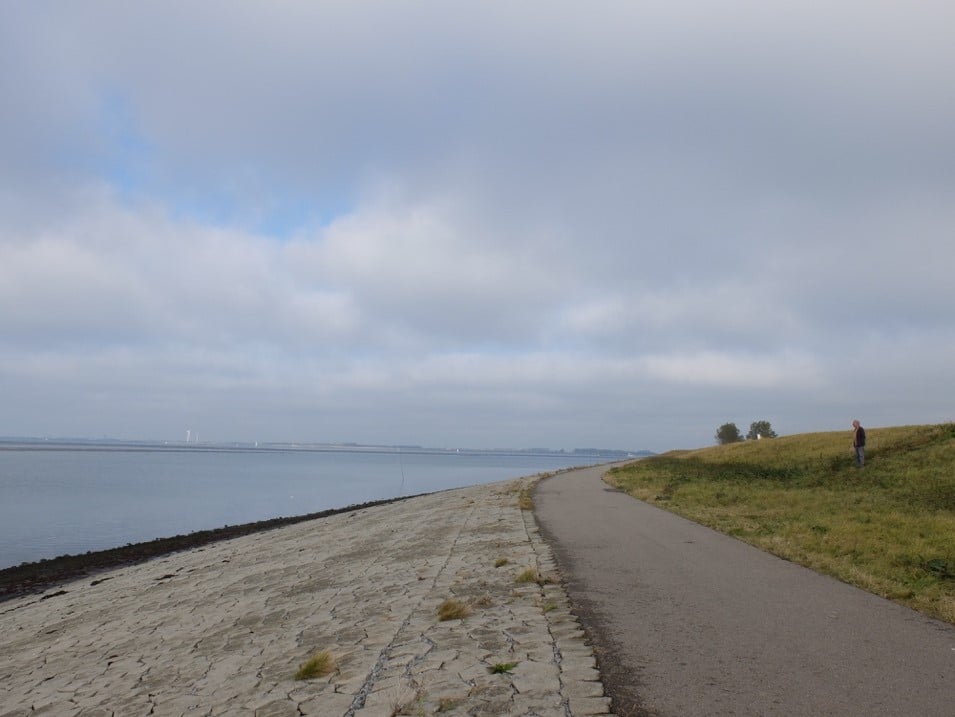The flood of 1953 was a terrible event in the history of the Netherlands. At that time my granddad lived in Stavenisse, one of the villages hardest hit by the flood. He was ten years old when his village was flooded and still he can tell his story as if it happened last year. He loves to share his story to raise awareness about the dangers of water.
Below is my granddad's description of what happened to him and his family during the flood of 1953.
My grandpa's story
I remember walking home from the market with my mother. Once we crossed the harbour my mom commented that the water level was higher than the normal water level of low tides. During dinner that evening my parents discussed the water level in the harbour; that it had to do something with the storm in Scotland. We did not really worry about the situation and just went to bed that night as we always did.
In the middle of the night the dykes near the village broke and the water entered the main land. My dad woke me up and told me to go to the attic. Together with my parents and siblings we were sitting there, waiting for the moment when the water level would drop. After a while however, the water level was still rising and we had to flee to the roof. It was the beginning of February, which meant that the temperature was barely above freezing.

Village of Stavenisse - one of the few houses that was still standing after the flood, and still is today.
We were finally rescued from our rooftop and were brought to one of the houses on the dyke where we were safe. Every resident of our village was either in one of the houses on the dyke or at the town hall. These two locations where the highest points of the village and therefore the only places the water couldn’t reach.
Combined forces
The cause of the flood was a combination of two factors. The first factor was the storm that occurred in Scotland.This storm caused water from the North Sea to be pushed to the south-west, towards Netherlands, Belgium and England. Due to the accumulation of water in this part of the North Sea, the water level was higher than normal, as we noticed in our harbour.
 Here's where the dyke broke and water entered the land.
Here's where the dyke broke and water entered the land.
My granddad is standing at the location of the water level during the flood.
The storm not only influenced the water level but the wind speed as well, which was also stronger than usual. These were the two major factors of the storm. In combination with the spring tide that occurred that day, these combined forces became too great for the dykes. Eventually the dykes could not hold anymore and broke.
 My graddad at the Church of Stavenisse.
My graddad at the Church of Stavenisse.
The red arrow indicates the water level during the flood of 1953.
After the terrible days of the flood, the damage caused to the village became clear. Approximately 150 people did not survive the flood. This may not seem like a lot, but my village only consisted of 1500 people. A lot of houses were damaged and had to be rebuilt. Fortunately the Canadian and Norwegian armies supported us.
The night of the flood and the difficult time afterwards will always be in my memory. This event should never be forgotten even though nowadays we are used to living safely by the water.
We almost tend to forget the force of water and how much damage it can cause. Especially with the sea level rise and the climate change this is going to be a challenge for the future. This challenge starts by making the society aware of the dangers and the risks of water. By sharing my story I hope that you get conscious about the water risks and that you can spread my word to reach as many people as possible.
Raised Awareness
The story that my granddad told me helped to raise my own awareness about living around water. I am convinced that we as a society need to take actions, and I am beginning with myself. This story also influenced my choice of choosing to study at the Delta Academy because of their connection with delta areas and civil engineering.
Inspired and interested in more effects of the Flood of 1953? Check out my previous blog post about the Maeslantkering.
